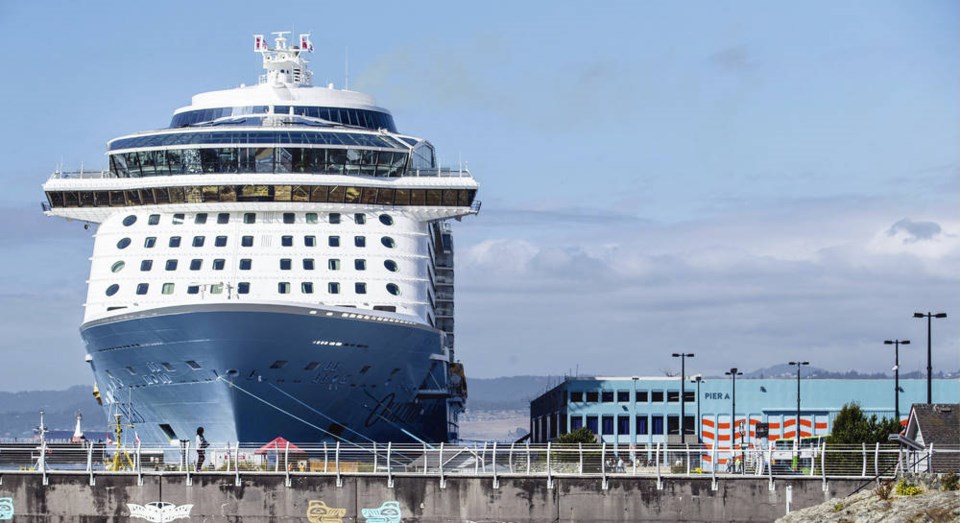The Greater Victoria Harbour Authority plans to establish shore power for cruise ships at Ogden Point, although it doesn’t know when the $25-million project will start.
The authority’s board of directors made the decision late last week after a consultant’s report concluded there is a business case to be made for shore power. With the installation of shore power, the reduction in greenhouse-gas emissions at Ogden Point is expected to be the equivalent of taking 1,394 cars off the road per year.
The report, authored by Moffat and Nichol, suggests there could be a 46 per cent reduction in greenhouse-gas emissions and air contaminants if shore power is established at two berths at Pier B at Ogden Point.
The authority, which grossed just over $16 million last year, now needs to find someone to pay for a project the consultants estimate could cost as much as $24.8 million.
“There’s no question this is the right thing to do when you look at it from an environmental perspective, a social perspective and an economic perspective, but it’s clear the GVHA cannot do this on its own,” said chief executive Ian Robertson.
Robertson said he will start making the rounds to potential funding partners, which could include all levels of government, the cruise-ship industry and other private partners.
He was quick to note, however, that the authority will first need to see the cruise-ship industry get back to work in the region and stabilize, which means there is no set timeline to start the project.
The cruise industry, which in 2019 brought 256 ships and 709,000 passengers to Victoria, has been shut down since the early stages of the COVID-19 pandemic.
“There’s no question the 2021 season, while we are planning for it, is certainly not a given, considering everything happening around us, so it’s difficult to put a timeline against that,” Robertson said.
The James Bay Neighbourhood Association has for years called for shore power to deal with emissions from cruise ships, and has argued that taxpayers should not have to pay to fund the cruise-ship industry.
City of Victoria Mayor Lisa Helps would not weigh in on funding at this point, but supports the GVHA’s decision.
“It’s great to see the Greater Victoria Harbour Authority moving forward with shore power,” she said. “Victoria’s tourism industry has been leading a national conversation on sustainable tourism for a number of years now.”
The authority estimates that in 2019, the industry was responsible for 800 jobs and contributed more than $130 million to the local economy annually.
Robertson emphasized the authority would not rely solely on governments to fund the project.
The consultant’s report suggests it’s unworkable to have cruise-ship companies pay for the power upgrade on their own, since it would require each vessel to pay close to $20,000 per call. But it says if governments covered half the $24.8 -million project cost, the per-call fee would be reduced to a more sustainable $13,000.
Cruise ships are the biggest polluters at Ogden Point, accounting for 96 per cent of all greenhouse-gas emissions.
Of those emissions, 29 per cent are produced while the vessels maneuver into a berth, while 71 per cent are produced while vessels are in port, idling engines to provide power for the ship.
Last year, an environmental-impact report from Synergy Enterprises showed greenhouse-gas emissions at Ogden Point had increased nearly 20 per cent over the past 10 years to just over 12,000 tonnes, or the equivalent of 3,241 vehicles on the road per year.
Shore power would effectively end the need to keep the engines running for those vessels that are able to plug into the system.
It’s anticipated that by 2030, 85 per cent of all cruise ships that stop in Victoria will be able to hook up to shore power.
“This is a big and exciting step for the GVHA, and I’m proud of the board for the support to move ahead on this initiative,” said Robertson.



